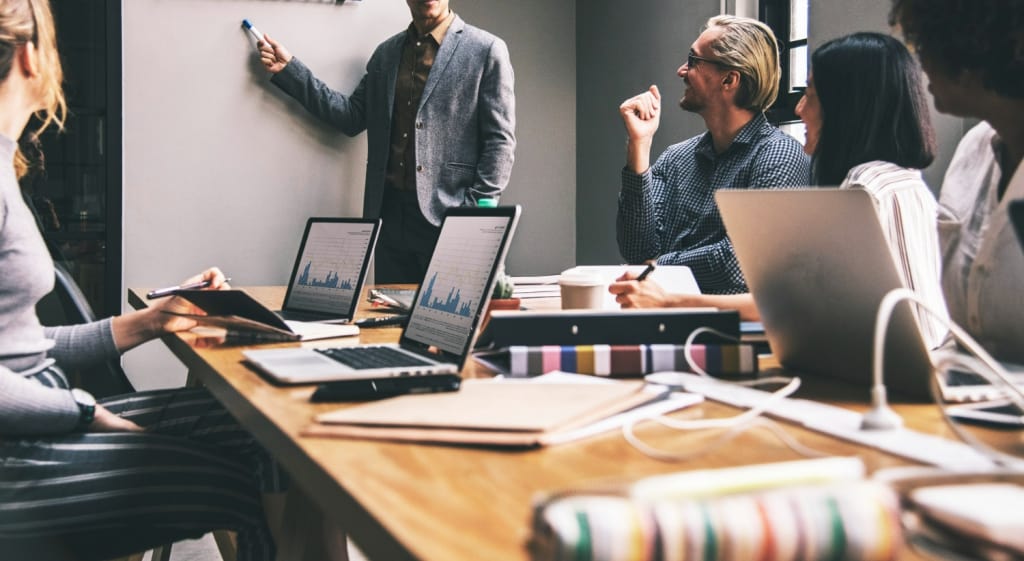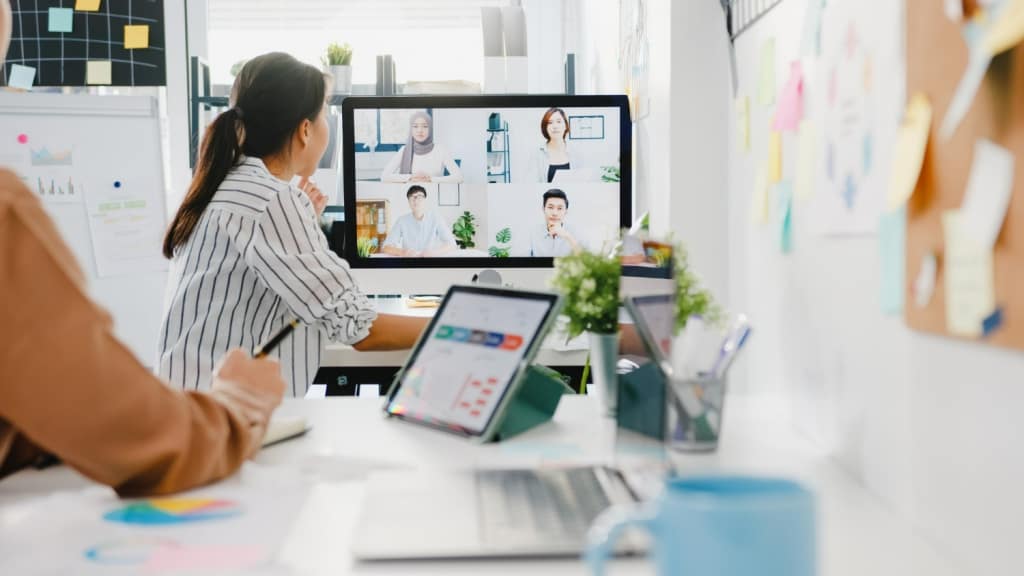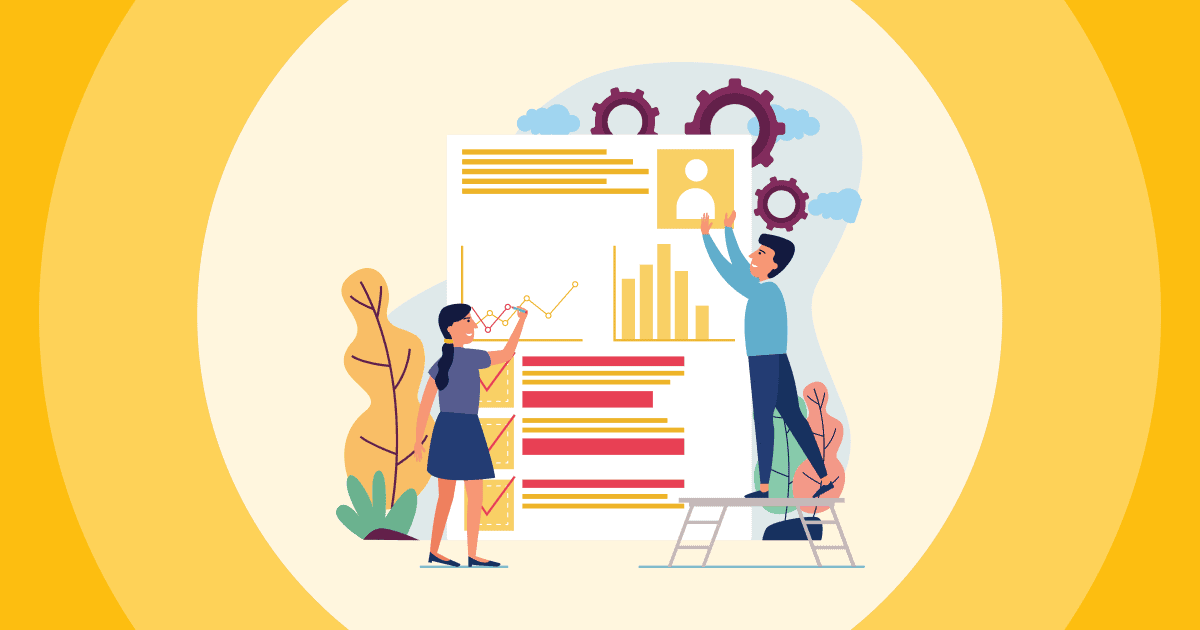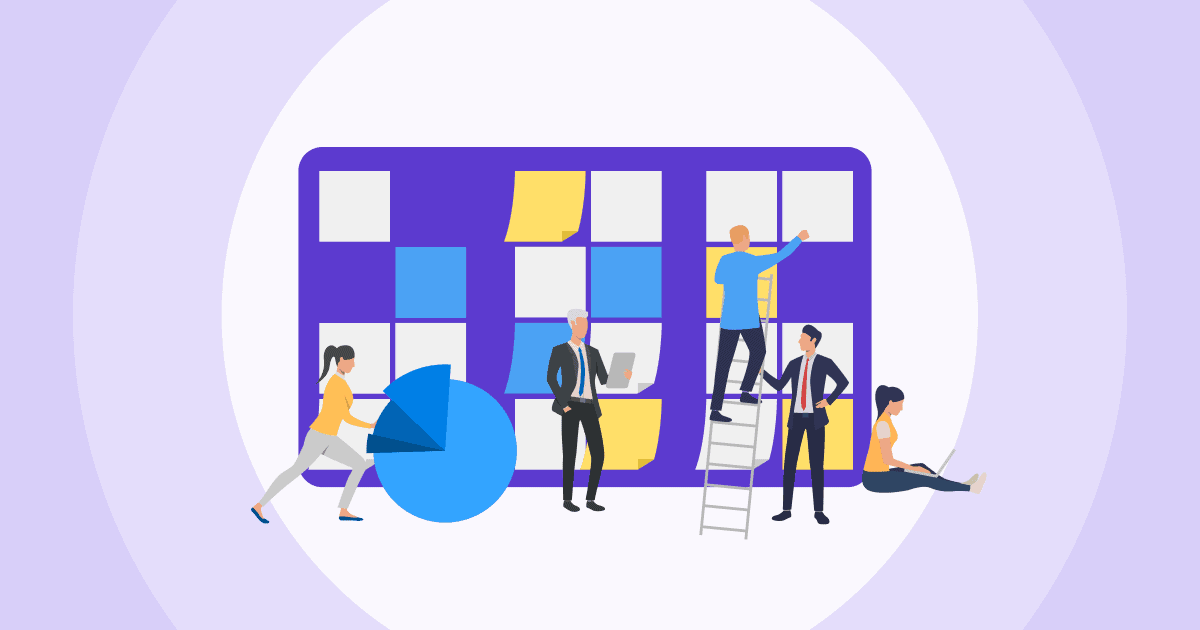Meetings play a crucial role in businesses and organizations, serving as a platform for discussing and addressing issues and managing internal affairs to drive progress. To capture the essence of these gatherings, whether virtual or in-person, meeting minutes or minutes of meeting (MoM) are crucial in taking notes, summarizing key topics discussed and keeping track of decisions and resolutions reached.
This article will guide you in writing effective meeting minutes, with examples and templates to use, as well as best practices to follow.
Table of Contents
- What Are Meeting Minutes?
- Who Is The Minute-Taker?
- How to Write Meeting Minutes
- Meeting Minutes Examples (+ Templates)
- Tips to Create Good Meeting Minutes
- Key Takeaways

What Are Meeting Minutes?
Meeting minutes are a written record of the discussions, decisions, and action items that occur during a meeting.
- They serve as a reference and source of information for all attendees and those unable to attend.
- They help ensure that important information is not forgotten and that everyone is on the same page about what was discussed and what actions to take.
- They also provide accountability and transparency by documenting decisions and commitments made during the meeting.
Who Is The Minute-Taker?
The Minute-Taker is responsible for accurately recording discussions and decisions made during the meeting.
They can be an administrative officer, a secretary, an assistant or manager, or a volunteer team member performing the task. It is essential that the minute-taker has good organization and note-taking, and can summarize discussions effectively.

Fun Meeting Attendance with AhaSlides

Get people gathered at the same times
Rather than coming to each table and 'checking' on people in case they don't show up, now, you can gather people attention and check attendance by fun interactive quizzes with AhaSlides!
🚀 Get Free Templates ☁️
How to Write Meeting Minutes
For effective meeting minutes, first, they should be objective, be a factual record of the meeting, and avoid personal opinions or subjective interpretations of discussions. Next, it should be short, clear, and easy to understand, only focus on the main points, and avoid adding unnecessary details. Finally, it must be accurate and ensure that all recorded information is fresh and relevant.
Let's go into the details of writing meeting minutes using the following steps!
8 Essential Components of Meeting Minutes
- Date, time, and location of the meeting
- List of attendees and any apologies for absence
- Agenda and purpose of the meeting
- Summary of the discussions and decisions made
- Any votes taken and their outcomes
- Action items, including the responsible party and deadline for completion
- Any next steps or follow-up items
- Closing remarks or adjournment of the meeting

Steps for writing effective meeting minutes
1/ Preparation
Before the meeting, familiarize yourself with the meeting agenda and any relevant background materials. Make sure you have all the necessary tools, such as a laptop, notepad, and pen. It is also a good idea to review previous meeting minutes to get a sense of what information to include and how to format one.
2/ Note-taking
During the meeting, take clear and concise notes on the discussions and decisions made. You should focus on capturing key points, decisions, and action items, rather than transcribing the entire meeting verbatim. Make sure to include the names of speakers or any key quotes, and any action items or decisions. And avoid writing in abbreviations or shorthand that make others not understand.
3/ Organize the minutes
Review and organize your notes to create a coherent and concise summary of your minutes after the meeting. You can use headings and bullet points to make the minutes easy to read. Do not take personal opinions or subjective interpretations of the discussion. Focus on the facts and what was agreed upon during the meeting.
4/ Recording the details
Your meeting minutes should include all relevant details, such as the date, time, location, and attendees. And mention any important topics discussed, decisions, and action items assigned. Be sure to record any votes that were taken and the outcome of any discussions.
5/ Action items
Make sure to list any action items that were assigned, including who is responsible and the deadline for completion. This is a crucial part of the meeting minutes, as it ensures that everyone knows their responsibilities and the timeline for completing them.
6/ Review and distribution
You should review the minutes for accuracy and completeness, and make any necessary revisions. Make sure that all key points and decisions are noted. Then, you can distribute the minutes to all attendees, either in person or via email. Store a copy of the minutes in a centralized location for easy access, such as a shared drive or a cloud-based storage platform.
7/ Follow-up
Ensure that the action items from the meeting are followed up on and completed promptly. Use the minutes to track progress and make sure that decisions are implemented. It helps you to maintain accountability and ensures that the meeting is productive and effective.

Meeting Minutes Examples (+ Templates)
1/ Meeting Minutes Example: Simple Meeting Template
The level of detail and complexity of simple meeting minutes will depend on the purpose of the meeting and the needs of your organization.
In general, simple meeting minutes are used for internal purposes and do not need to be as formal or comprehensive as other types of meeting minutes.
So, if you are in urgent need and the meeting revolves around simple, not-too-important content, you can use the following template:
| Meeting Title: [Insert Meeting Title] Date: [Insert Date] Time: [Insert Time] Location: [Insert Location] Attendees: [Insert Names of Attendees] Apologies for Absence: [Insert Names] Agenda: [Insert Agenda Item 1] [Insert Agenda Item 2] [Insert Agenda Item 3] Meeting Summary: [Insert a summary of the discussions and decisions made during the meeting, including any key points or action items.] Action Items: [Insert a list of any action items that were assigned during the meeting, including the responsible party and deadline for completion.] Next Steps: [Insert any next steps or follow-up items that were discussed during the meeting.] Closing Remarks: [Insert any closing remarks or adjournment of the meeting.] Signed: [Insert Signature of the Person Taking Minutes] |
2/ Meeting Minutes Example: Board Meeting Template
The board meeting minutes are recorded and distributed to all members, providing a record of the decisions made and the direction of the organization. Therefore, it should be clear, complete, detailed, and formal. Here is a board meeting minutes template:
| Meeting Title: Board of Directors Meeting Date: [Insert Date] Time: [Insert Time] Location: [Insert Location] Attendees: [Insert Names of Attendees] Apologies for Absence: [Insert Names of those who Apologized for Absence] Agenda: 1. Approval of previous meeting's minutes 2. Financial report review 3. Discussion of the strategic plan 4. Any other business Meeting Summary: 1. Approval of previous meeting minutes: [Insert highlights from the previous meeting were reviewed and approved] 2. Financial report review: [Insert highlights of the current financial situation and recommendations for future financial planning] 3. Discussion of the strategic plan: [Insert which the board discussed and made updates to the organization's strategic plan] 4. Any other business: [Insert any other important matters that were not included in the agenda] Action Items: [Insert a list of any action items that were assigned during the meeting, including the responsible party and deadline for completion] Next Steps: The board will have a follow-up meeting in [Insert Date]. Closing Remarks: The meeting adjourned at [Insert Time]. Signed: [Insert Signature of the Person Taking Minutes] |
This is just a basic board meeting template, and you may want to add or remove elements depending on the needs of your meeting and organization.
3/ Meeting Minutes Example: Project Management Template
Here is a meeting minutes example for a project management template:
| Meeting Title: Project Management Team Meeting Date: [Insert Date] Time: [Insert Time] Location: [Insert Location] Attendees: [Insert Names of Attendees] Apologies for Absence: [Insert Names of those who Apologized for Absence] Agenda: 1. Review of project status 2. Discussion of project risks 3. Review of team progress 4. Any other business Meeting Summary: 1. Review of project status: [Insert any update on the progress and highlight any issues that need to be addressed] 2. Discussion of project risks: [Insert potential risks to the project and a plan to mitigate those risks] 3. Review of team progress: [Insert reviewed progress and discussed any issues arisen] 4 Any other business: [Insert any other important matters that were not included in the agenda] Action Items: [Insert a list of any action items that were assigned during the meeting, including the responsible party and deadline for completion] Next Steps: The team will have a follow-up meeting in [Insert Date]. Closing Remarks: The meeting adjourned at [Insert Time]. Signed: [Insert Signature of the Person Taking Minutes] |
Tips to Create Good Meeting Minutes
Don't stress about capturing every word, focus on logging the major topics, outcomes, decisions, and action items. Put the discussions on a live platform so you can catch all the words into a big one net🎣 - AhaSlides' idea board is an intuitive and simple tool for everyone to submit their ideas quickly. Here's how you do it:
Create a new presentation with your AhaSlides account, then add the Brainstorm slide in the "Poll" section.

Write your topic of discussion, then hit "Present" so everyone in the meeting can join and submit their ideas.

Sounds easy-peasy, isn't it? Try this feature now, it's just one of the useful features to help facilitate your meetings with lively, robust discussions.
Key Takeaways
The purpose of meeting minutes is to provide a high-level overview of the meeting for those who were not able to attend, as well as to keep a record of the outcomes of the meeting. Therefore, the minutes should be organized and easy to understand, highlighting the most important information clearly and concisely.







